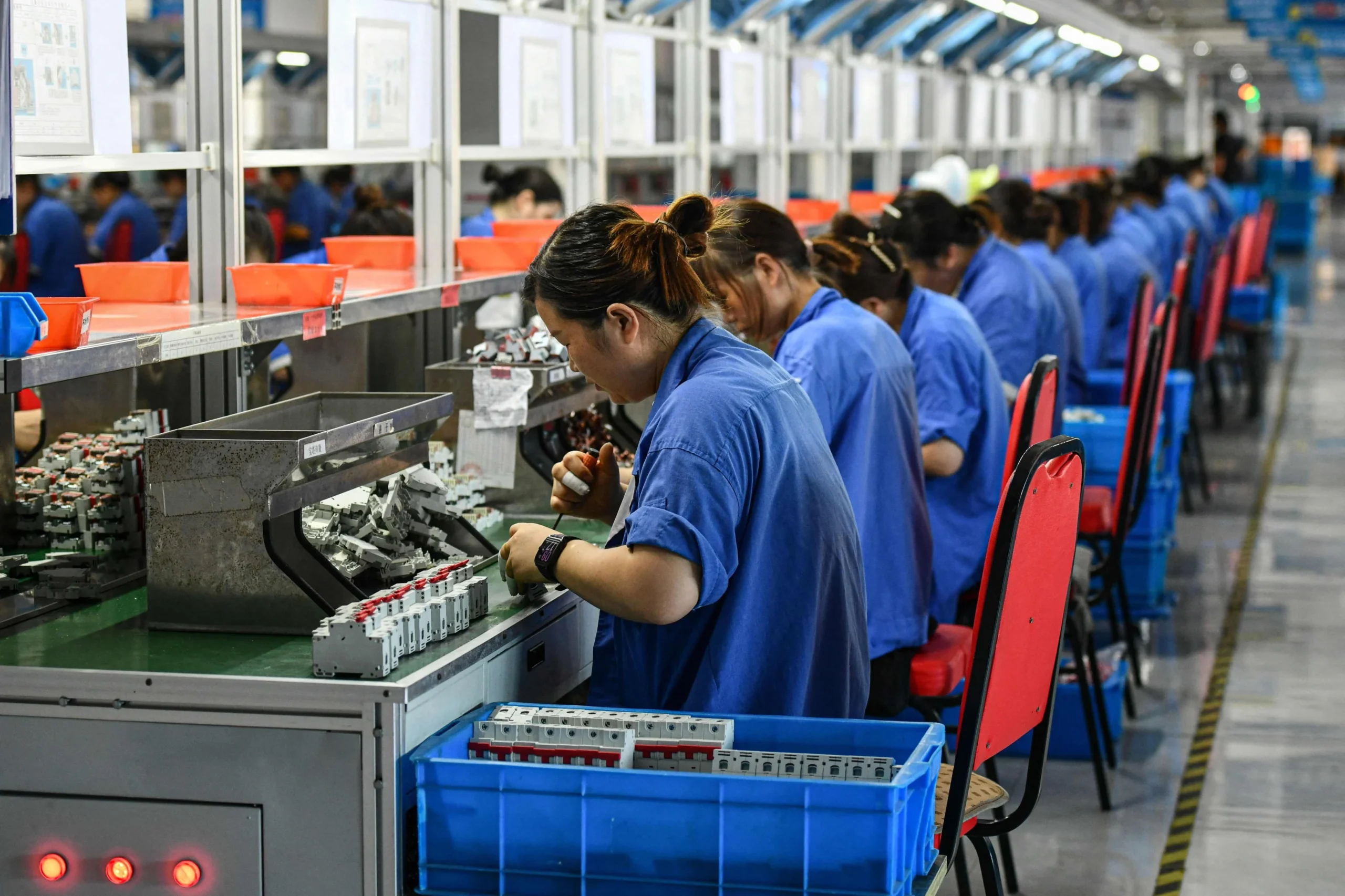October Data Exposes China’s Economic Fragility, Trump Threatens Stability
In October, China’s factory output growth slowed, and it’s too early to declare a recovery in the troubled property sector, despite a slight increase in consumer activity. This situation has led to ongoing calls for Beijing to boost its recent stimulus efforts to revive the economy. The latest data is likely to increase pressure on Chinese policymakers, especially as they brace for Donald Trump’s potential return to the White House. Trump has vowed to hike tariffs on Chinese goods and has appointed China hawks to his cabinet, posing a significant challenge for the world’s second-largest economy. The combination of internal economic struggles and external political pressures underscores the urgency for China to implement more effective economic policies.
In October, China’s industrial output increased by 5.3% compared to the previous year, according to data from the National Bureau of Statistics (NBS) released on Friday. This growth rate is slightly lower than September’s 5.4% and falls short of the 5.6% increase predicted by a Reuters poll. On the other hand, retail sales, which measure consumer spending, surged by 4.8% in October. This is a significant improvement from the 3.2% growth seen in September and represents the fastest growth rate since February.
Retail growth received a significant boost from a week-long holiday and the annual Singles’ Day shopping festival, which began on October 14, ten days earlier than the previous year. According to data provider Syntun, sales on major e-commerce platforms surged by 26.6%, reaching 1.44 trillion yuan during the event. Zichun Huang, a China economist at Capital Economists, noted that “China’s economy improved further at the start of Q4, thanks to stronger-than-expected consumer spending.” Huang added, “We believe faster fiscal spending will support a continued cyclical pickup in activity over the coming months. However, Trump’s victory casts a shadow over the outlook further ahead.”
“Recent changes in economic operations during September and October have bolstered China’s confidence in meeting its 2024 economic growth target of around 5%,” he noted. However, some economists argue that it’s still too early to assess whether the latest policy support measures from September are enough to ensure a robust recovery. “The effects of the stimulus should already be visible in consumption, given that the trade-in program has been active for several months,” commented Dan Wang, an independent economist based in Shanghai.
She observed that recent stimulus efforts, particularly those aimed at the housing sector, have not yet yielded noticeable results. The National Bureau of Statistics (NBS) indicated a significant 39.2% increase in home appliance sales in October, which was driven by the consumer goods trade-in initiative. Additionally, fixed asset investment grew by 3.4% from January to October year-on-year, falling just short of the expected 3.5% increase. This growth rate was consistent with the figures reported for the January-September period.
“Conditions in the property sector remain weak,” said Xing Zhaopeng, ANZ’s senior China strategist, noting the lack of significant improvement in property investment, sales, and prices. The decline in property investment deepened from January to October. However, sales showed a narrower decline, suggesting that recent stimulus measures might be starting to breathe some life into the struggling sector, though a robust recovery may still be distant.
Property sales by floor area in the January-October period fell 15.8% year-on-year, a slight improvement from the 17.1% drop between January and September. On Wednesday, authorities announced tax incentives for home and land transactions, which Zhao said demonstrate Beijing’s “commitment to further stabilizing the property market.”
Trump’s recent election victory has stirred anxiety in China, as the President-elect has vowed to impose tariffs of 60% or more on Chinese imports. This move could lead to prolonged economic uncertainty and further delay the anticipated recovery. Goldman Sachs economists, in a note released on Friday, highlighted the potential risks posed by the Trump administration. They anticipate that Chinese policymakers will significantly cut policy rates by 40 basis points and expand the augmented fiscal deficit by 1.88 percentage points of GDP in 2025 to counter these challenges.
They emphasized that “a multi-year fiscal expansion is essential to counteract cyclical growth challenges and address medium-term structural issues.” In September, China’s central bank introduced its most significant stimulus since the pandemic. Additionally, last week, the nation’s top legislative body approved a 10 trillion yuan ($1.4 trillion) package aimed at alleviating local government “hidden debt” burdens, instead of directly injecting funds into the economy as some investors had anticipated.
Analysts predict that the slew of measures will yield only a modest boost to economic activity in the short term. “We anticipate the economy will begin to decelerate again by the latter half of next year,” remarked Huang from Capital Economics. “By then, Chinese manufacturers will also contend with the added challenge of a potential second trade war with Trump.”













